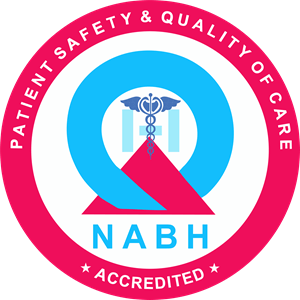LASIK Flap Dislocation – Myths vs Reality
Are you considering LASIK surgery but scared of flap dislocation?
Maybe you’ve seen YouTube videos showing that a minor injury or rubbing your eyes can cause the LASIK flap to move, leading to potential blindness.
The truth is – LASIK flap dislocation is extremely rare. Let’s understand why.
Does the LASIK Flap Ever Heal Completely?
One important fact – the LASIK flap never heals 100% like natural corneal tissue.
But this doesn’t mean it can be easily dislodged.
Lifting the flap requires:
- Special microsurgical instruments
- Advanced surgical skills
- Precision and time
It’s almost impossible to lift the flap by simply rubbing your eyes or with minor trauma.
My Recent Case
Recently, a patient from Assam visited me. They had undergone LASIK 10–15 years ago.
Their vision number had slightly changed by about 1–1.5 diopters.
We planned an enhancement surgery, which meant carefully lifting the old flap and performing laser correction again.
Just identifying and lifting the flap edge took me 5–7 minutes — and that too with specialized tools and years of surgical expertise.
This is proof that LASIK flaps are not fragile.
Why Lifting a LASIK Flap is Difficult
- The flap edge is hard to identify after years
- Requires entering beneath the flap with microsurgical tools
- Adhesions must be gently separated using fluid
- Needs steady hands and an experienced refractive surgeon
Bottom line: Everyday activities cannot accidentally lift your flap.
Flapless LASIK Technologies vs Flap LASIK
Modern options like Trans PRK, Streamlight, SmartSurf, SMILE, and SILK are promoted as flapless procedures.
While these have their benefits, having a flap is not a disadvantage.
Flap LASIK remains safe when done by an experienced surgeon and followed by proper post-op care.
What If a Flap Does Get Dislodged?
- It can be managed effectively
- Does not cause immediate blindness
- With timely treatment, vision can be fully restored
Conclusion
The fear of LASIK flap dislocation is largely a myth.
If you follow your surgeon’s instructions, your flap will remain safe.
And even in the rare event of dislocation, it is treatable without long-term vision loss.
Dr. Piyush Tewari
Tewari Eye Centre
SEO Keywords to Target
LASIK flap dislocation, LASIK safety, Can LASIK flap move?, LASIK complications, LASIK enhancement surgery, flap vs flapless LASIK, SMILE vs LASIK, LASIK after 10 years.
No — normal rubbing or touching your eye after healing will not move the flap. In the initial 1–2 weeks after surgery, avoid rubbing, but after healing, it’s extremely difficult to dislodge.
Technically, yes, but only with significant trauma or deliberate surgical lifting using specialized tools — not with daily activities.
Yes. Many patients undergo enhancement surgeries 10–20 years after their first LASIK, and results are excellent if done by an experienced surgeon.
No. Even in rare cases of dislocation, timely treatment can restore full vision.


